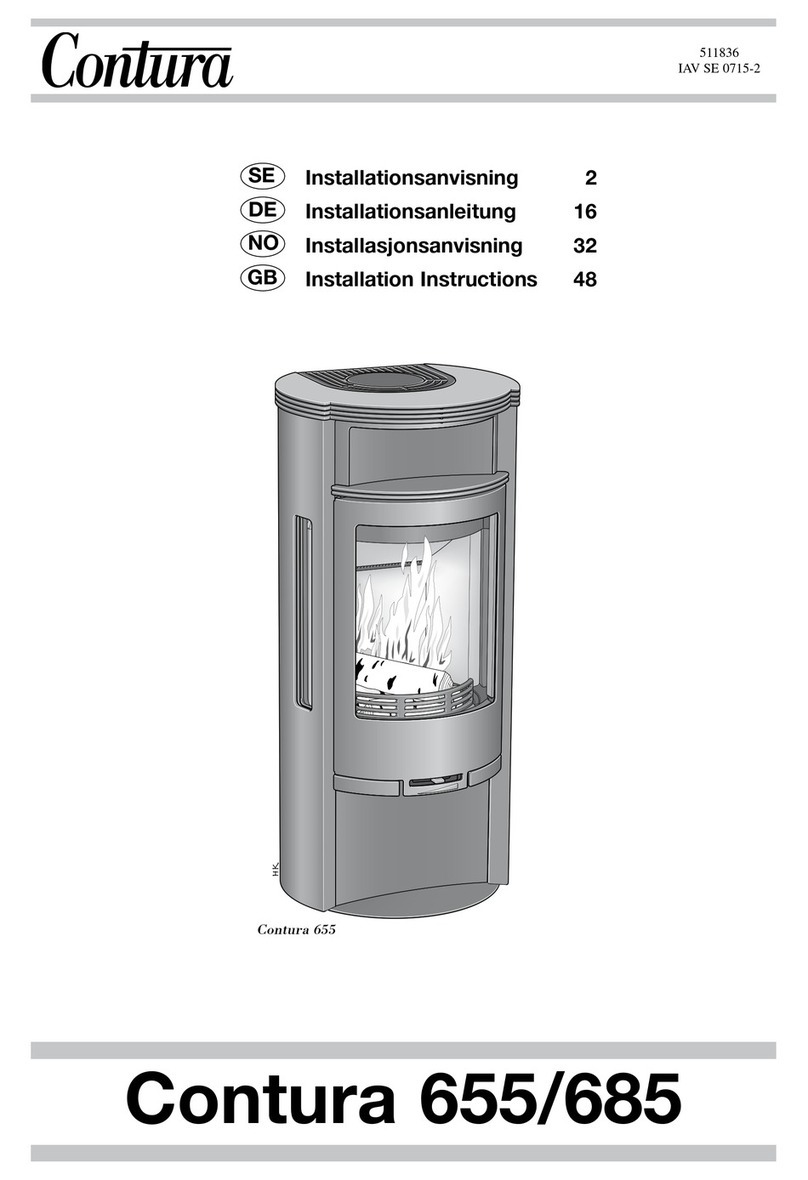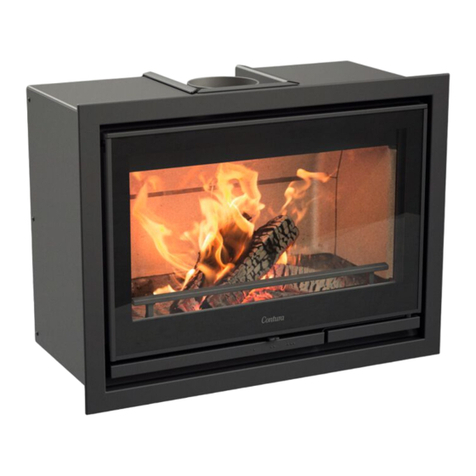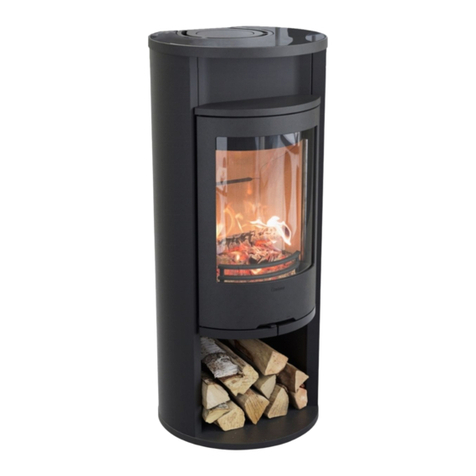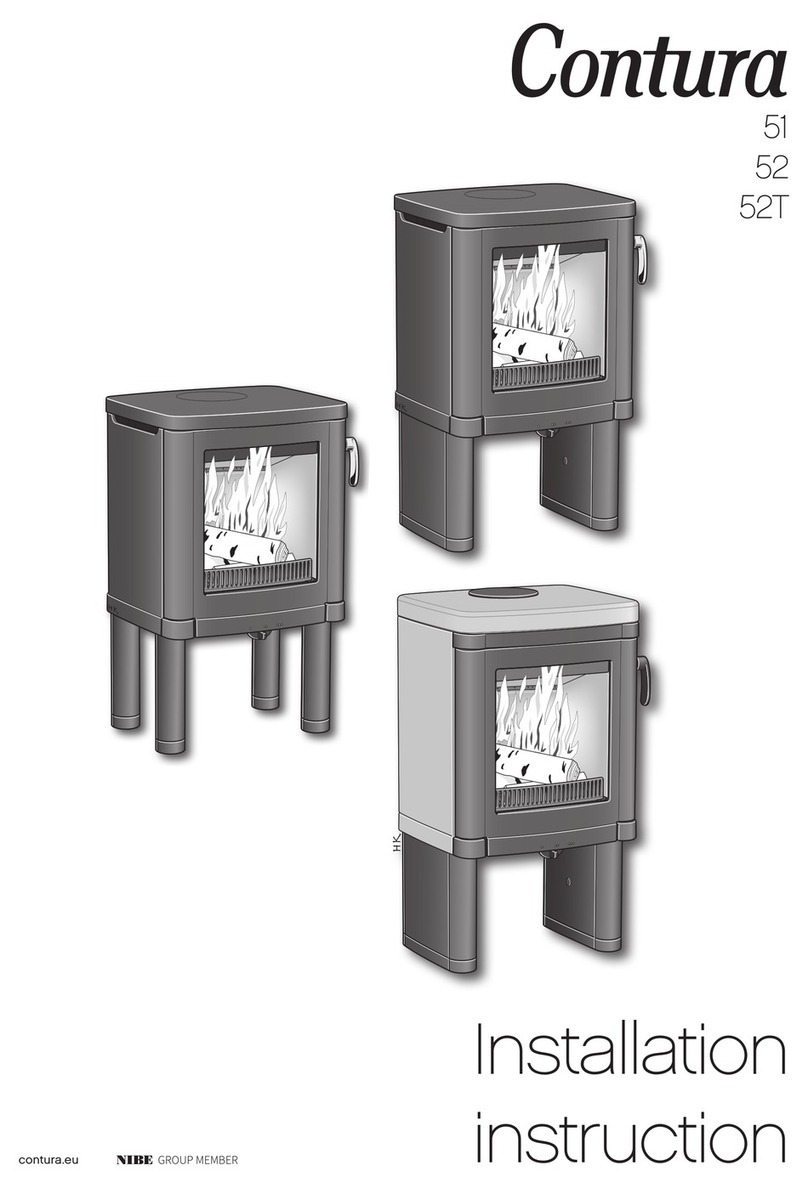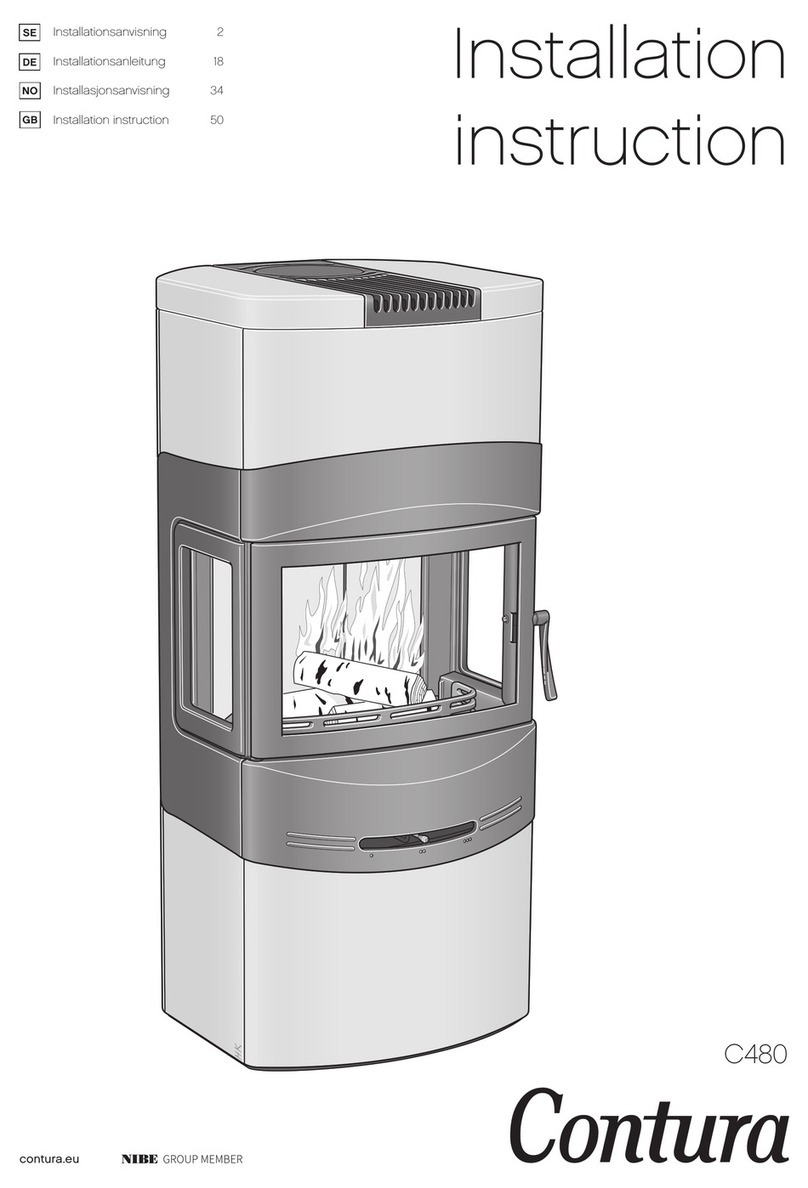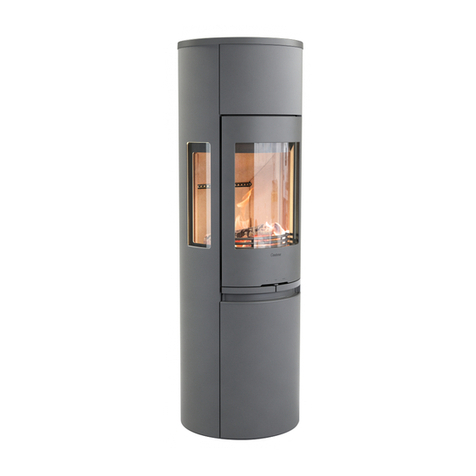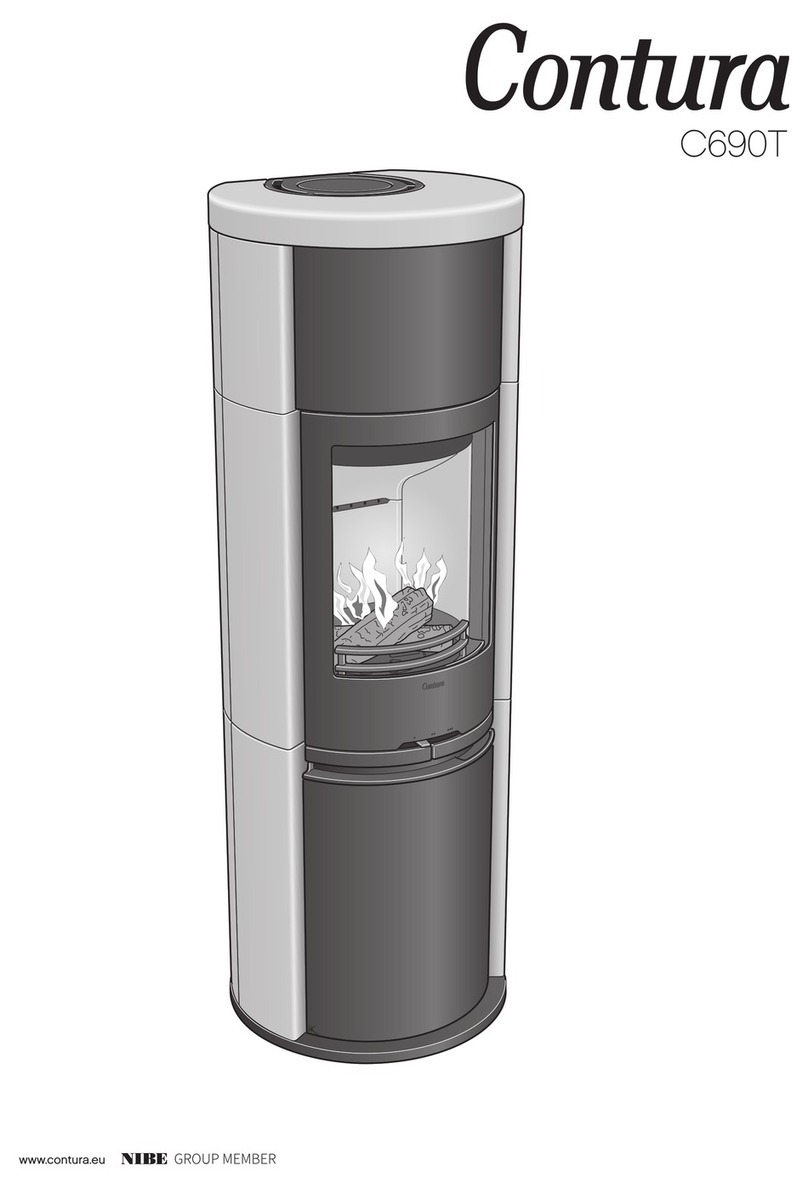
GB
27
Lighting Instructions
The wood’s moisture
content
Fresh wood is about 50 per cent water.
Some of the water circulates freely
between the fibres and some of the water
is bound in the cells. The wood must always be dried so that the free water
evaporates. The timber is ready for use when the moisture content has
fallen below 20%. If wood with a higher moisture content is lit, a large part
of the energy content of the wood is used boiling off the water. If the wood
is damp, the combustion is also poor, layers of soot and tar build up in the
chimney and could, at worst, lead to a chimney fire. In addition, it causes
the glass of the stove to soot and may cause discomfort to those living
nearby.
To ensure thoroughly dry wood, the wood should be cut in the winter and
stored, well aired, under a roof. Never cover the woodpile with a tarpaulin
to the ground. The tarpaulin will then act as a sealed cover and the wood
will be prevented from drying. Always store a small amount of wood indoors
for several days before use, so that the surface moisture has time to
evaporate.
When the stove is new
When new, the stove may emit an odour due to excess paint and oil coating
that may remain on the panels. The odour will disappear completely after
several fires.
Maintaining the stove
The glass may become sooty with use, even if the stove is lit with dry wood
with a moisture content of 15 – 20%. Regular cleaning with dry paper is
usually sufficient to keep it clean. If the soot has been on the glass for a
long time, dip the damp paper into the soft, none abrasive ashes and wipe
clean. Ash and water will remove the soot. This is the only cleaning method
we recommend. Detergents and special soot removes/fireplace glass
cleaner are available from supermarkets, DIY shops and local stove dealer,
we do not recommend these. Never use cleaning agents that contain
abrasives or that have a corrosive effect on printed or painted glass. These
may damage the glass/paintwork. Do not use cleaning products containing
sodium hydroxide because of their corrosive effect on sealing strips.
• When emptying the ash-pan, ensure that there are no glowing embers.
The ash must be stored in a fireproof container with a lid for at least one
week before being disposed of.
• Also clean inside the area where the ash-pan is located, otherwise
spilled ash can prevent the ash-pan from being fully inserted and
prevent the fireplace door from being closed properly.
• The grate and other cast iron components in the firebox can be cleaned
using a wire brush.
• It is important from a combustion point of view to check gaskets, as
worn gaskets hinder combustion when the stove draws “extra air”.
• Painted parts on the stove can be cleaned using a damp cloth, with a
small amount of detergent, if necessary. Damage to painted parts, e.g.
small scratches, can be rectified with Contura touch-up paint. Contact
your dealer.
• As there is a constant large flow of air through the stove, as cold room
air is drawn in and hot air released, dust can collect behind and under
the stove. Therefore, the areas under and behind the stove should be
regularly cleaned.
• Parts located near the actual seat of the fire may require replacing.
Examples of such parts are the hearth surround and grate. The service
life of these parts depends on how much and how the stove is used.
• Only use spare parts recommended by Contura.
Do NOT burn the following
Under no circumstances whatsoever may fossil fuels, pressure
impregnated wood, painted or glued wood, chipboard, plastic or colour
brochures be used as fuel. All these materials can create hydrochloric
acid and heavy metals that are damaging both to the environment and the
hearth. Hydrochloric acid can also attack the steel in the chimney or the
mortar in a stone built chimney.
Also avoid using bark, woodchips or other extremely finely chopped wood
except for lighting. Fuel of this type causes flashover resulting in too high
output.
Not too big fires
Fires should not be too big. Large fires are uneconomical and they give
off high flue gas temperatures that can damage the stove and the
environment. Recommended amount of wood for normal use is 1.3 kg/hour,
with the maximum permitted amount of 2.4 kg/hour and covers lighting
with chopped birch wood or other broad leaf wood with a moisture content
of about 18%. When lighting with the same wood amounts as above
but with, for example, conifer wood, higher fireplace temperatures are
achieved. The service life of the stove can be cut short if the fire is left at
full combustion for long periods, and if the maximum permitted amount of
wood is exceeded, parts in the stove can become damaged thus annulling
the warranty.
Choosing fuel
All types of wood, such as birch, beech,
oak, elm, ash, conifers and fruit trees can
be used as fuel in the stove. Different
types of trees have different densities,
the greater the density of the wood the
greater the energy value. Oak, beech and
birch have the highest density.
Hearth plate glass must
be discarded as waste
material together with
pottery and porcelain
Candles
Do not use old candle stubs as fuel. Melted wax runs down into the stove’s
damper system and makes the stove unusable. Repairs for this are very
expensive.
Managing waste
The stove packaging is cardboard, wood and a small amount of plastic. The
materials must be sorted and recycled.
